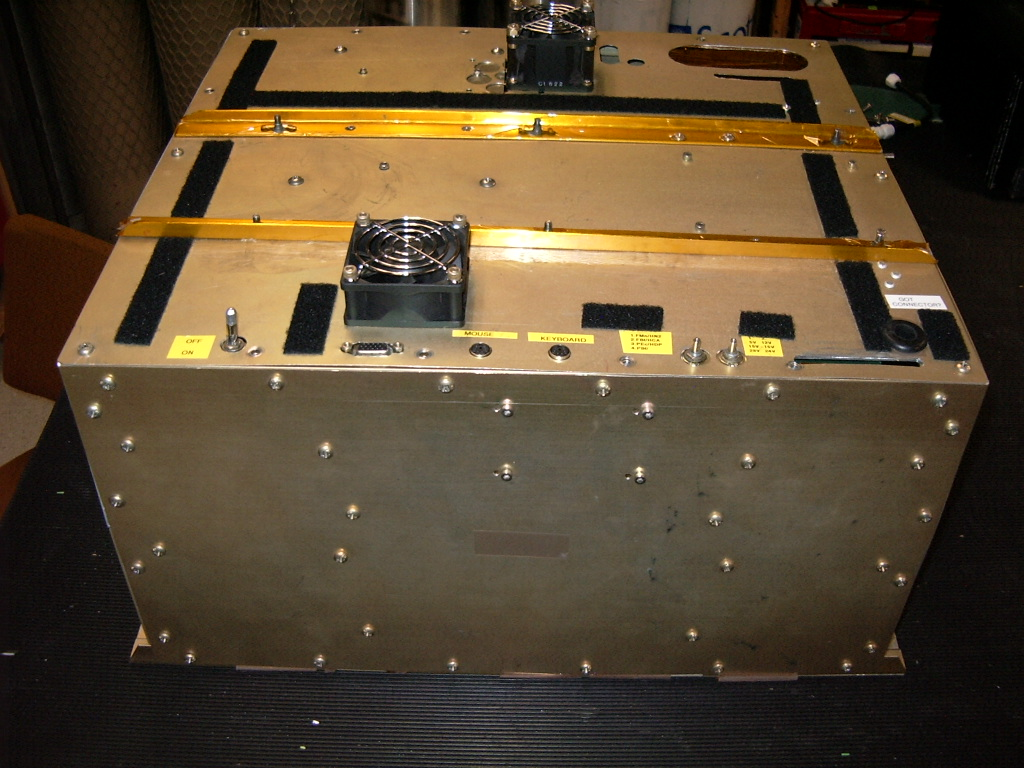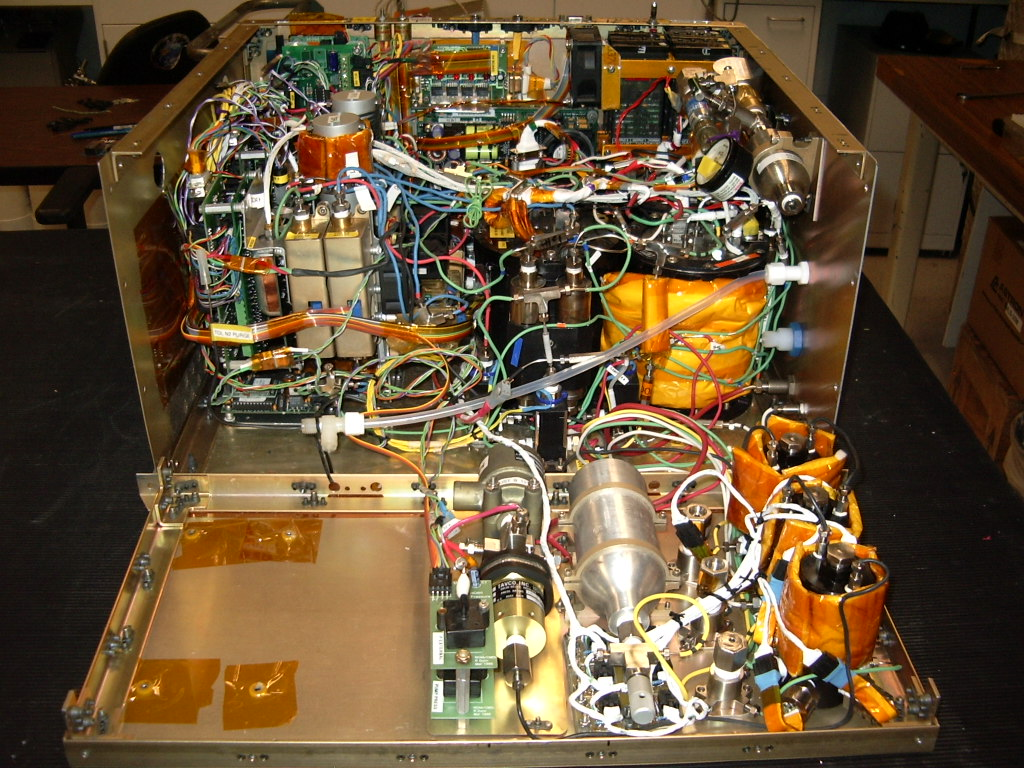UAS Chromatograph for Atmospheric Trace Species (UCATS)
UCATS is comprised of three instruments: a two-channel gas chromatograph, an ozone photometer, and a TDL hygrometer. Below are descriptions of each component.
UCATS has participated on several unmanned aerial systems (UAS) missions on a couple of differnet platforms: the UAS demo and FIRE missions aboard Altair and the GloPac and ATTREX campaigns on the Global Hawk aircraft. The instrument has also participated on the NCAR/NSF GV-5 for the START-08 and HIPPO programs.
Principal Investigator: James W. Elkins (1), Co-investigators: Eric Hintsa (2), Fred Moore (2), Brad Hall (1), David Nance (2), Geoff Dutton (2), Sam Oltmans (2), Laura Patrick (2) and Dale Hurst (2)
(1) NOAA/GML
(2) Cooperative Institute for Research in Environmental Sciences (CIRES)
Gas Chromatograph Description:
The 2-channel UCATS GC utilizes rapid gas chromatography to measure five trace gases every 70 sec.: nitrous oxide, N2O; sulfur hexafluoride, SF6; chlorofluorocarbon (CFC)-11, CCl3F; CFC-12, CCl2F2; and halon-1211, CBrClF2. Each channel is comprised of a 12-port valve for sample injection, a 1.5 cm3 sample loop, narrow bore (2.2 mm id) packed columns, and an electron capture detector. The GC carrier gas and calibration gas are contained in aircraft certified high-pressure cylinders mounted external to the instrument box. A Teflon diaphragm pump, also external to the GC, flushes air samples through the GC for their subsequent analyses. The N2O/SF6 measurements require doping of one ECD with a miniscule flow of carbon dioxide from a small, high-pressure cylinder inside the instrument. For extended low-tropospheric flying, a small amount of desiccant (Mg(ClO4)2) is required to dry the sample air stream before it enters the GC. Calibration is performed in-flight every 5 min. through the analysis of a standardized cylinder of dried whole air. Further calibration is performed in the laboratory to characterize detector response functions over the full ranges of trace gas mixing ratios measured during flights. An on-board computer provides instrument control while continuously logging chromatographic and engineering data. Data are recorded on removable media (PCMCIA flash disk) during flight, then are archived off-line after landing. In the post-flight phase, chromatograms are processed into mixing ratio data with error estimates for each measurement.
- Accuracy: ± 1%
- Precision: ± 0.2-0.5% (N2O, CFC-11, CFC-12), ± 0.8-1.0% (SF6), ± 1.5-3.0% (halon-1211)
- Weight: 80 lbs.
- Power: 28VDC, 100W typical, 300W maximum
- Response Time: 70 sec.
Ozone Photometer Description:
The OZ photometer is a small, low-power instrument that measures ozone (O3) mixing ratios in the air stream every 10 sec. The instrument, which resides inside the UCATS GC box, is nearly self-contained, having it’s own air pump, instrument control software, and data acquisition board, needing only its power from the GC power distribution system. The photometer requires its own Teflon inlet tubing that is void of any wetted metal surfaces. The ozone measurements are based on the absorption of UV light (254 nm) by the ozone present in air as it flows through a 15-cm long absorption cell at approximately 1 L min-1. The intensities of light reaching the photodiode detector after alternately passing through ozone-free air (IO) and sampled air (I) in the cell are used in a simple Beer-Lambert Law calculation of the ozone mixing ratio. Photodiode signals and housekeeping data such as cell pressure and temperature are recorded on a PCMCIA compact flash card which is removed post-flight for data processing. The ozone data are also logged by the GC data acquisition system. The photometer is calibrated in the laboratory before and after flights.
- Accuracy: ±5 ppb
- Precision: ±3 ppb
- Weight: included in GC weight
- Power: included in GC power
- Response Time: 10 sec.
Tunable Diode Laser Spectrometer for Water Vapor (WV)
The WV TDL spectrometer provides 1 Hz measurements of water vapor using near-infrared (1370 nm) laser absorption spectroscopy with second harmonic detection. Output from the fiber-coupled near-infrared diode laser is split into two optical paths that probe the same temperature regulated sample cell: a short path (13.4 cm) for H2O mixing ratios greater than ~700 ppmv, and a long path (389 cm) for H2O mixing ratios from 1 to ~1000 ppmv. The instrument, mounted on the inside face of the top panel of the UCATS enclosure, utilizes the GC power distribution and data acquisition systems. Air is drawn from a tee in the heated GC inlet tubing, using a small downstream diaphragm pump, to provide sample flows of ~1L min-1 to the hygrometer. Water vapor mixing ratios for both optical paths are computed by a microprocessor within the instrument, using vendor-defined calibration parameters and standard pressure and temperature conversions. Mixing ratio values and vital housekeeping data (e.g., cell pressure, cell temperature, laser power, spectral line position) are output via serial port to the GC computer for logging. Calibration is checked in the home laboratory against a cryogenic frost point hygrometer, and in the field using gravimetrically-prepared standards of water vapor in zero air.
- Data Interval: 1 second
- Accuracy: ±3-5%
- Precision: ±2-3%


